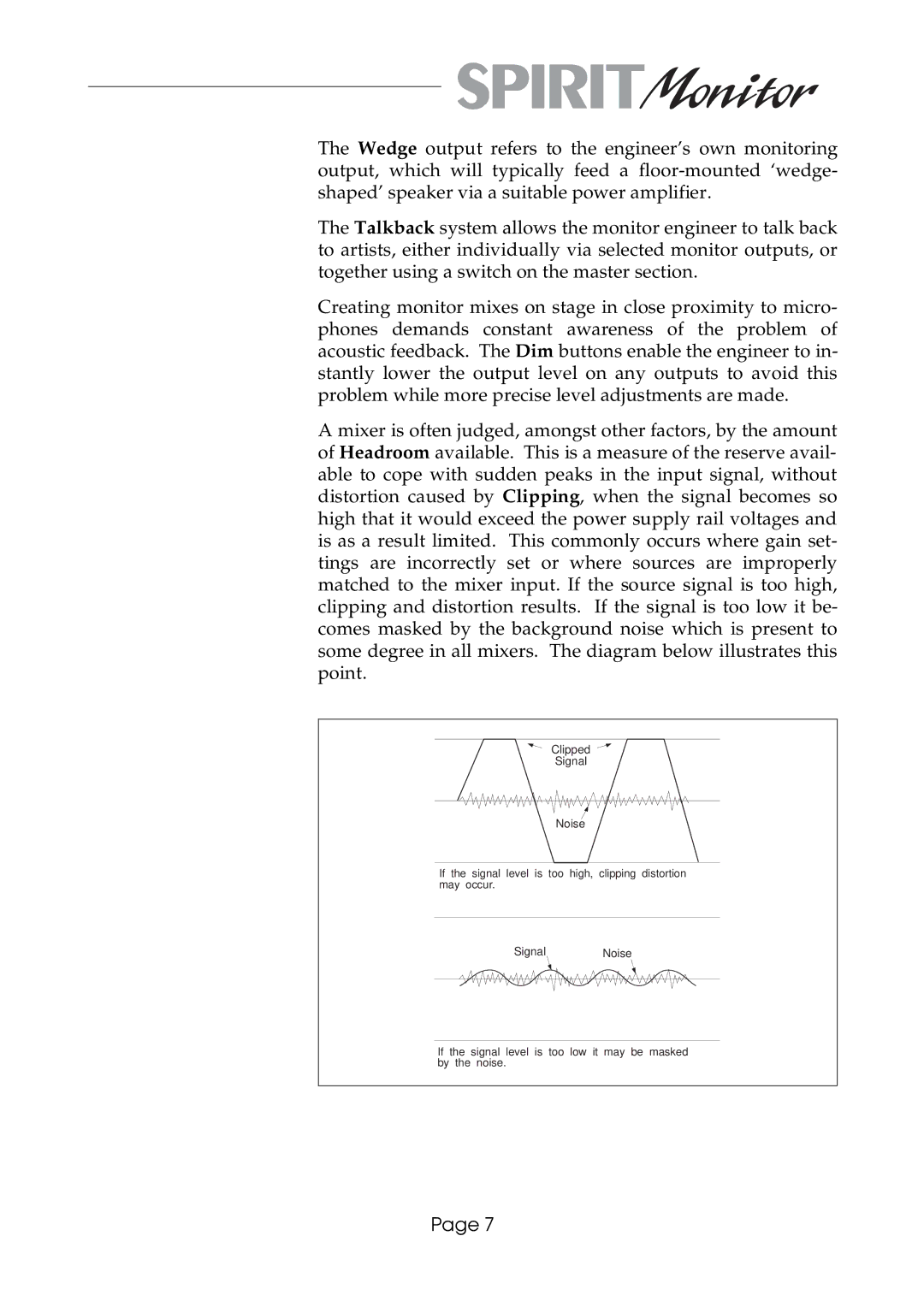
The Wedge output refers to the engineer’s own monitoring output, which will typically feed a
The Talkback system allows the monitor engineer to talk back to artists, either individually via selected monitor outputs, or together using a switch on the master section.
Creating monitor mixes on stage in close proximity to micro- phones demands constant awareness of the problem of acoustic feedback. The Dim buttons enable the engineer to in- stantly lower the output level on any outputs to avoid this problem while more precise level adjustments are made.
A mixer is often judged, amongst other factors, by the amount of Headroom available. This is a measure of the reserve avail- able to cope with sudden peaks in the input signal, without distortion caused by Clipping, when the signal becomes so high that it would exceed the power supply rail voltages and is as a result limited. This commonly occurs where gain set- tings are incorrectly set or where sources are improperly matched to the mixer input. If the source signal is too high, clipping and distortion results. If the signal is too low it be- comes masked by the background noise which is present to some degree in all mixers. The diagram below illustrates this point.
Clipped
Signal
Noise
If the signal level is too high, clipping distortion may occur.
SignalNoise
If the signal level is too low it may be masked by the noise.
Page 7
